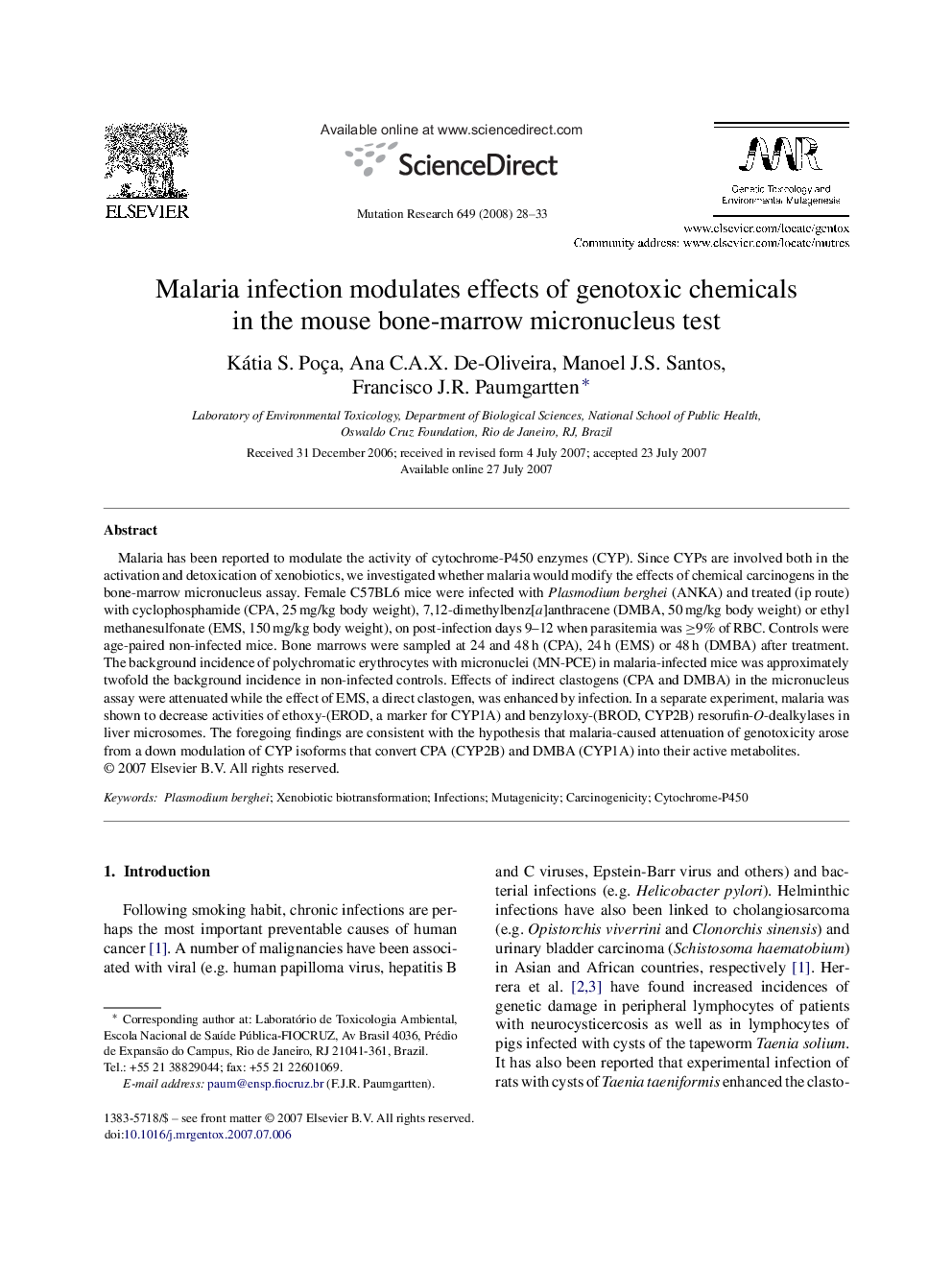| Article ID | Journal | Published Year | Pages | File Type |
|---|---|---|---|---|
| 2149089 | Mutation Research/Genetic Toxicology and Environmental Mutagenesis | 2008 | 6 Pages |
Abstract
Malaria has been reported to modulate the activity of cytochrome-P450 enzymes (CYP). Since CYPs are involved both in the activation and detoxication of xenobiotics, we investigated whether malaria would modify the effects of chemical carcinogens in the bone-marrow micronucleus assay. Female C57BL6 mice were infected with Plasmodium berghei (ANKA) and treated (ip route) with cyclophosphamide (CPA, 25 mg/kg body weight), 7,12-dimethylbenz[a]anthracene (DMBA, 50 mg/kg body weight) or ethyl methanesulfonate (EMS, 150 mg/kg body weight), on post-infection days 9-12 when parasitemia was â¥9% of RBC. Controls were age-paired non-infected mice. Bone marrows were sampled at 24 and 48 h (CPA), 24 h (EMS) or 48 h (DMBA) after treatment. The background incidence of polychromatic erythrocytes with micronuclei (MN-PCE) in malaria-infected mice was approximately twofold the background incidence in non-infected controls. Effects of indirect clastogens (CPA and DMBA) in the micronucleus assay were attenuated while the effect of EMS, a direct clastogen, was enhanced by infection. In a separate experiment, malaria was shown to decrease activities of ethoxy-(EROD, a marker for CYP1A) and benzyloxy-(BROD, CYP2B) resorufin-O-dealkylases in liver microsomes. The foregoing findings are consistent with the hypothesis that malaria-caused attenuation of genotoxicity arose from a down modulation of CYP isoforms that convert CPA (CYP2B) and DMBA (CYP1A) into their active metabolites.
Keywords
Related Topics
Life Sciences
Biochemistry, Genetics and Molecular Biology
Cancer Research
Authors
Kátia S. Poça, Ana C.A.X. De-Oliveira, Manoel J.S. Santos, Francisco J.R. Paumgartten,
